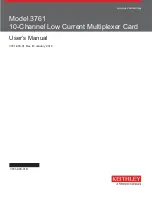
43
b) Resistance measuring
Make sure that all the circuit parts, switches and components and other objects of measurement are
disconnected from the voltage and capacitors are discharged.
Proceed as follows to measure the resistance:
• Turn the digital multimeter on and select the measuring setting position
“
” with the rotary switch (5). “M” and the “ ” unit symbol are
displayed in the LC display (4).
• Resistance measuring in auto-mode is selected by default and cannot
be switched off. The symbol and M for mega indicating resistance
measuring mode appear in the LC display (4).
• Insert the red measuring lead into the V socket (8) and the black
measuring lead into the COM socket (9).
• Now connect the two measuring prods to the object to be measured
(resistor, diode, etc.).
• The red measuring tip indicates the positive pole, the black measuring
tip the negative pole.
•
When measuring high resistance above >1 MΩ, itmay take a few
seconds until the reading has stabilized.
• As soon as “OL” appears in the centre of the LC display (4), you have
exceeded the measuring range or the measuring circuit is faulty.
Shorten the tips of the red and black test prods for testing
functionality. If the resistance when shorted is more than 0.5
Ω, please check if test leads are loose or damaged.
• Press the HOLD button (12) in order to lock a measured value if
needed. The hold symbol appears in the LC-display (4). Press the
HOLD button (12) in order to release the locked value. The hold symbol
disappears from the LC-display (4).
If lead resistance must be compensated for, please observe
the following. Measurement result = reading of resistor –
reading of test leads when shorted. The open circuit voltage
is 1 V.
• After measuring, remove the measuring leads from the measuring
object and turn the digital multimeter off. Turn the rotary switch (5) to
the position “OFF”.
D
















































